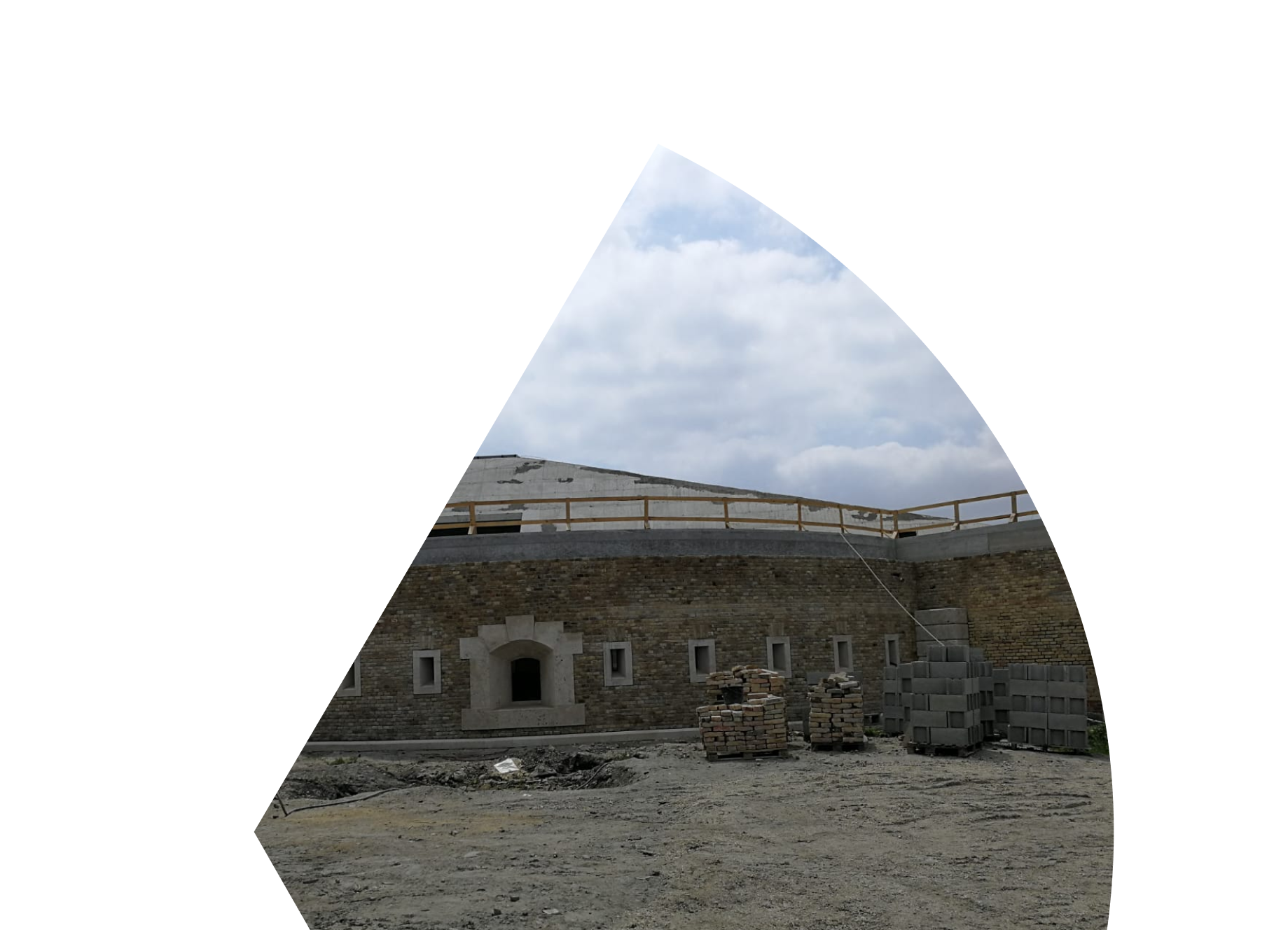Komárom

Learn about the history of Camp Komárom site in Hungary and the IHRA’s involvement with safeguarding the site.
The three forts of the Komárom Fort System – Igmándi, Monostor, and Csillag – sit on the bank of the Danube near the town of Komárom, Hungary, across the river from Slovakia. The site has hosted important fortifications for centuries; the current complex was mainly built between 1850 and 1877. Before the Nazi invasion of Hungary in March 1944, the Hungarian army used the forts, and some conscripted laborers and refugees, including Jewish people, fleeing other parts of Europe were housed inside.
In spring 1944, Hungarian authorities interned thousands of Jewish people in Fort Monostor before deporting them to Auschwitz-Birkenau. From November 1944, about 10,000 people, including thousands of Roma, were deported to the collection camp of Fort Csillag (Star Fort) in Komárom. Many people were then further transported to concentration camps in Nazi Germany from where they never returned. Hundreds of those who remained in Komárom died due to inhumane conditions in the camp. After the camp had closed in early 1945, many would die on forced walks to other camps, or on journeys home after their release.
After the war and postwar political upheaval, Fort Monostor became a critically important Red Army ammunition stockpile. Many young people from across the Soviet sphere of influence spent time there as part of compulsory military service. Forts Csillag and Igmándi were used for other military purposes. In 1992, the forts were officially registered as Hungarian National Monuments, and portions were opened to the public in 1994. In 1985, the municipal government installed a plaque to “victims of the Star Fort”; in 2004, a plaque commemorating the Roma genocide was installed with the support of a religious group, while another local group installed a general Holocaust memorial plaque in 2014. Currently, Fort Monostor holds a museum dedicated to the site’s long military history. Fort Csillag currently hosts art exhibitions. The lack of an official state memorial notwithstanding, the site, as the center of the Roma Holocaust in Hungary, is important for groups that merge memorial activity with contemporary pro-Roma political activism.
IHRA experts have been advocating for the creation of such a place since 2015. One of the central requests is a permanent exhibition depicting the fate of the Roma and Sinti.
In 2018, IHRA experts visited the site to discuss a possible venue for a permanent exhibition on the genocide of the Roma in Hungary. As Fort Csillag had been designated as a branch of the Budapest National Museum of Fine Arts, the space did not allow for a permanent exhibition on the fate of the Roma and Sinti. Accordingly, a possible alternative venue for the exhibition was presented at the nearby Fort Monostor.
The delegation included Martina Maschke as Chair of IHRA’s Committee on the Genocide of the Roma, and two members of the Committee: Gerhard Baumgartner (Director of the Documentation Center of Austrian Resistance) and Mirjam Karoly (Independent Expert on Human Rights, Minorities and Roma). The Hungarian delegation was comprised of then-State Secretary Szabolcs Takacs, Ágnes Károlyi (Chief of Cabinet), Laszlo Krasnyanszki (member of the Cabinet of the State Secretary), Laszlo Csösz (Hungarian member of the Committee of the Genocide of the Roma), Csaba Vizeli (director of Fort Monostor), as well as the representative responsible for cultural affairs of the city of Komárom.
Hungary expressed it would like both Forts Monostor and Csillag to be recognized as UNESCO world heritage sites and applied for EU funds to renovate the whole area in 2018. By adequately commemorating victims, the site can be used as a place of remembrance and education for generations to come.
The fort complex is still on Hungary’s “tentative” list for inscription, but IHRA delegates continue their efforts to see victims of the genocide of the Roma memorialized on-site.
The IHRA adopts the Prague Resolution, which encourages Member Countries to undertake all possible measures to mark Holocaust-related sites, preserve them, and prevent their misuse.
At the Debrecen Plenary, IHRA experts recommend that the IHRA focus its efforts on protecting and preserving Holocaust-related sites throughout its Member Countries and beyond.
The Committee on the Genocide of the Roma under the Hungarian IHRA Presidency begins advocating for the creation of a permanent exhibition and a state memorial within the fort complex.
Experts from the IHRA Committee on the Genocide of the Roma visit Komárom and meet with Hungarian government officials to agree that Fort Csillag and Fort Monostor should be inscribed on the UNESCO World Heritage List.
Hover over the data visualization to explore.